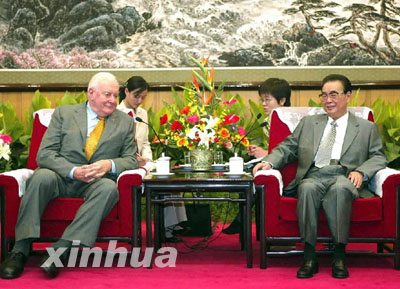 |
|
The then-Chairman of the Standing Committee of the NPC Li Peng meets with former Australian Prime Minister Gough Whitlam in Beidaihe, July 30, 2002. [Photo/Xinhua] |
An Australian journalist covering the visit wrote: "The Zhou-Whitlam debate is one of those unexpected dramatic events that make or break political reputations because they capture the public imagination. It will become a part of Australian political folklore and Mr. Whitlam is the beneficiary."
After Whitlam secured the Australian Labor Party's election win in 1972, and on his first day in office as prime minister, he started negotiations to establish diplomatic relations with China.
Many of China's top officials remembered the tall Australian politician in his previous visit. As a result, it was possible to complete the talks in record time. While it took years for some Western countries to negotiate their agreements with China, the Whitlam government had finished the process in a matter of weeks.
Whitlam landed in Beijing on Oct 31, 1973, and became the first Australian prime minister to visit China. As his motorcade drove into the Chinese capital, loudspeakers on the roadside played famous Australian songs Click Go the Shears, The Road to Gundagai, and Waltzing Matilda, as well as Chinese folk songs.
Whitlam spent a total of 17 hours in conversation with Zhou and as one Australian official observed, "When two countries haven't talked for 23 years, there is a lot to be said."
After a historic meeting with Chairman Mao, Whitlam referred to his China visit as the culmination of Australia's own "Long March".
"A generation of lost contact between our peoples has ended," he said.
During the landmark visit, a A$250-million agreement was signed on sugar importation from Australia. In today's terms that is approximately A$2 billion ($1.76 billion). The deal is seen as the official start of trade between China and Australia after 1949.
But trade is only one part of a whole picture. People-to-people contacts between the two countries have grown immensely.
A record number of Chinese tourists have been spending their vacations in Australia. More than 88,000 Chinese students are studying in Australia, and more young Australians are studying the Chinese language than ever before.
